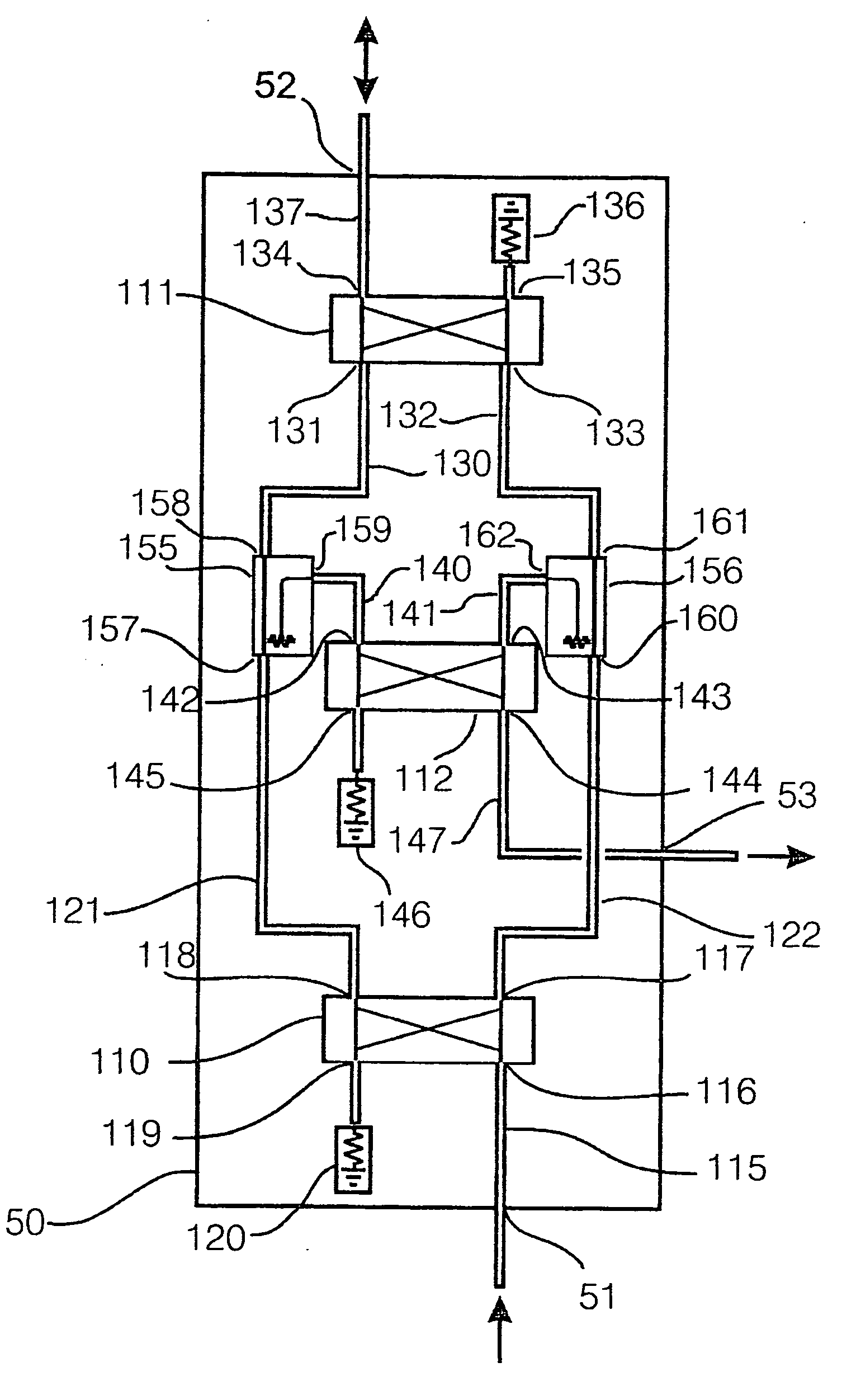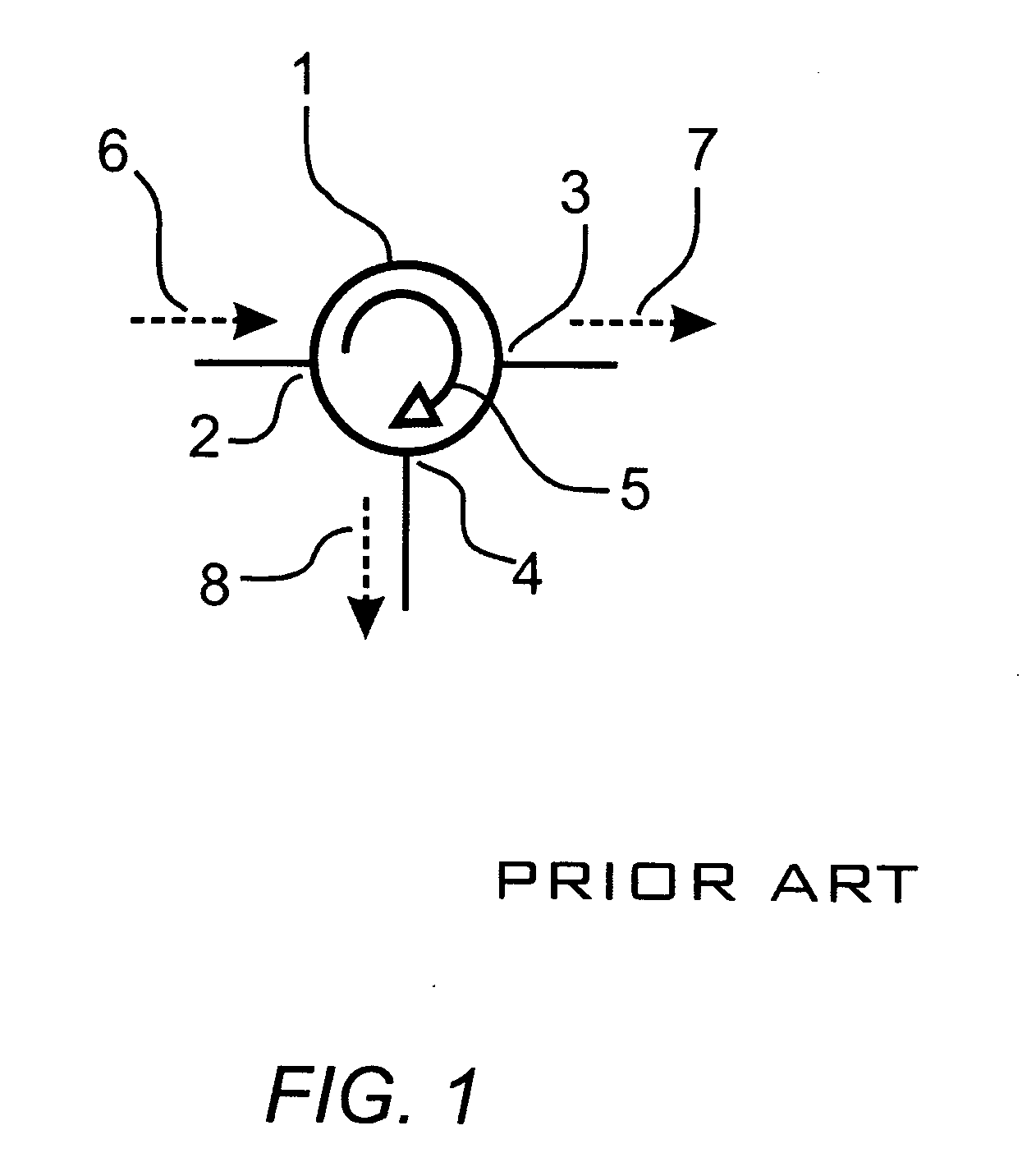High isolation signal routing assembly for full duplex communication
a signal routing and duplex communication technology, applied in the field of wireless transceivers, can solve the problems of system performance degradation, channel to channel isolation improvement, and portion of incident signal leakage, and achieve high isolation and high isolation.
- Summary
- Abstract
- Description
- Claims
- Application Information
AI Technical Summary
Benefits of technology
Problems solved by technology
Method used
Image
Examples
Embodiment Construction
[0058]Improvements in transmit to receive isolation for three-port signal routing devices can be provided using a combination of signal dividers with the proper signal phasing and conventional three port components that when properly connected will combine signals at the desired ports and cancel signals at the isolated ports.
[0059]The generalized construction of the three port signal routing device is shown in FIG. 4. The routing device 50 has one input port 51, one common port 52 and one output port 53. The input signal is received at the input port 51 and routed to the input 59 of a signal divider 54. Input port 51 is typically connected to the local transmitter. Signal divider 54 divides the transmission signal into first and second divided transmission signals output at ports 60 and 61 and having substantially equal amplitudes and a first relative phase shift therebetween. The signal divider 54 is any of a quadrature hybrid, or an equal phase power splitter, e.g., a Wilkinson po...
PUM
 Login to View More
Login to View More Abstract
Description
Claims
Application Information
 Login to View More
Login to View More - R&D
- Intellectual Property
- Life Sciences
- Materials
- Tech Scout
- Unparalleled Data Quality
- Higher Quality Content
- 60% Fewer Hallucinations
Browse by: Latest US Patents, China's latest patents, Technical Efficacy Thesaurus, Application Domain, Technology Topic, Popular Technical Reports.
© 2025 PatSnap. All rights reserved.Legal|Privacy policy|Modern Slavery Act Transparency Statement|Sitemap|About US| Contact US: help@patsnap.com



